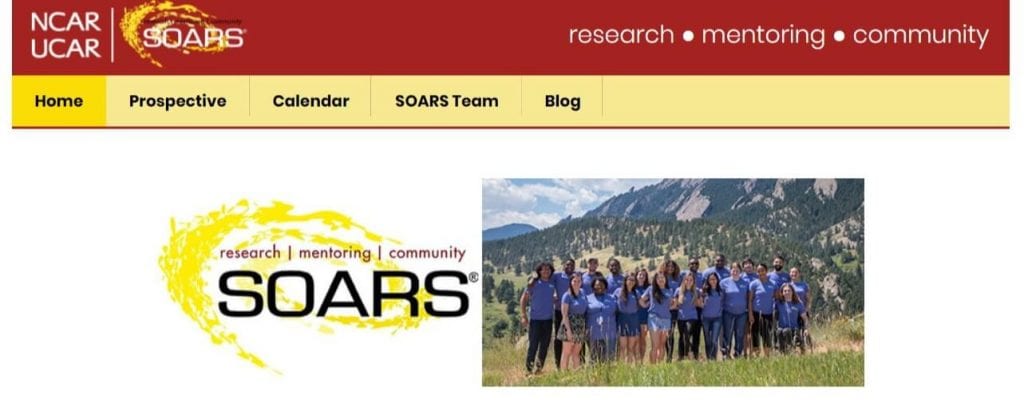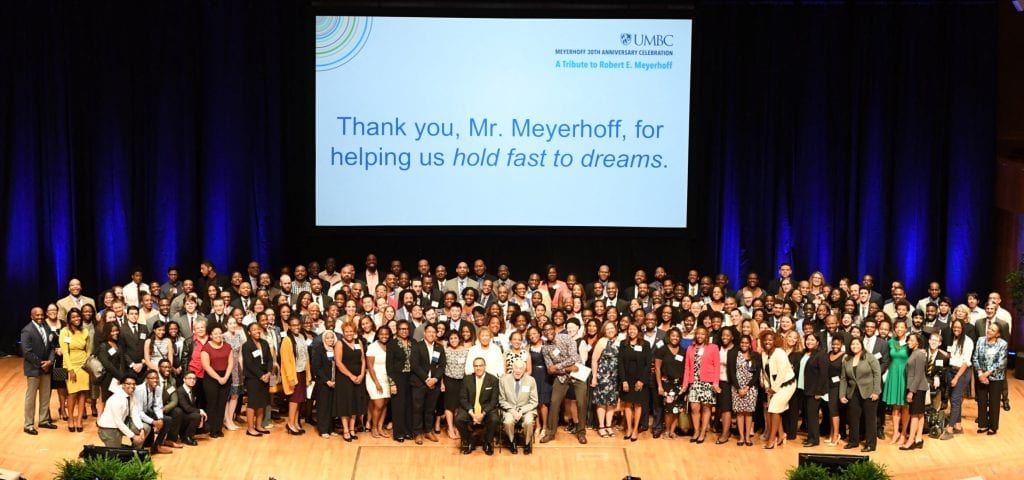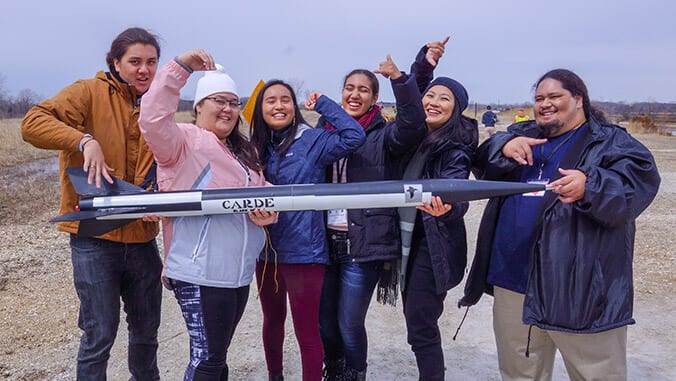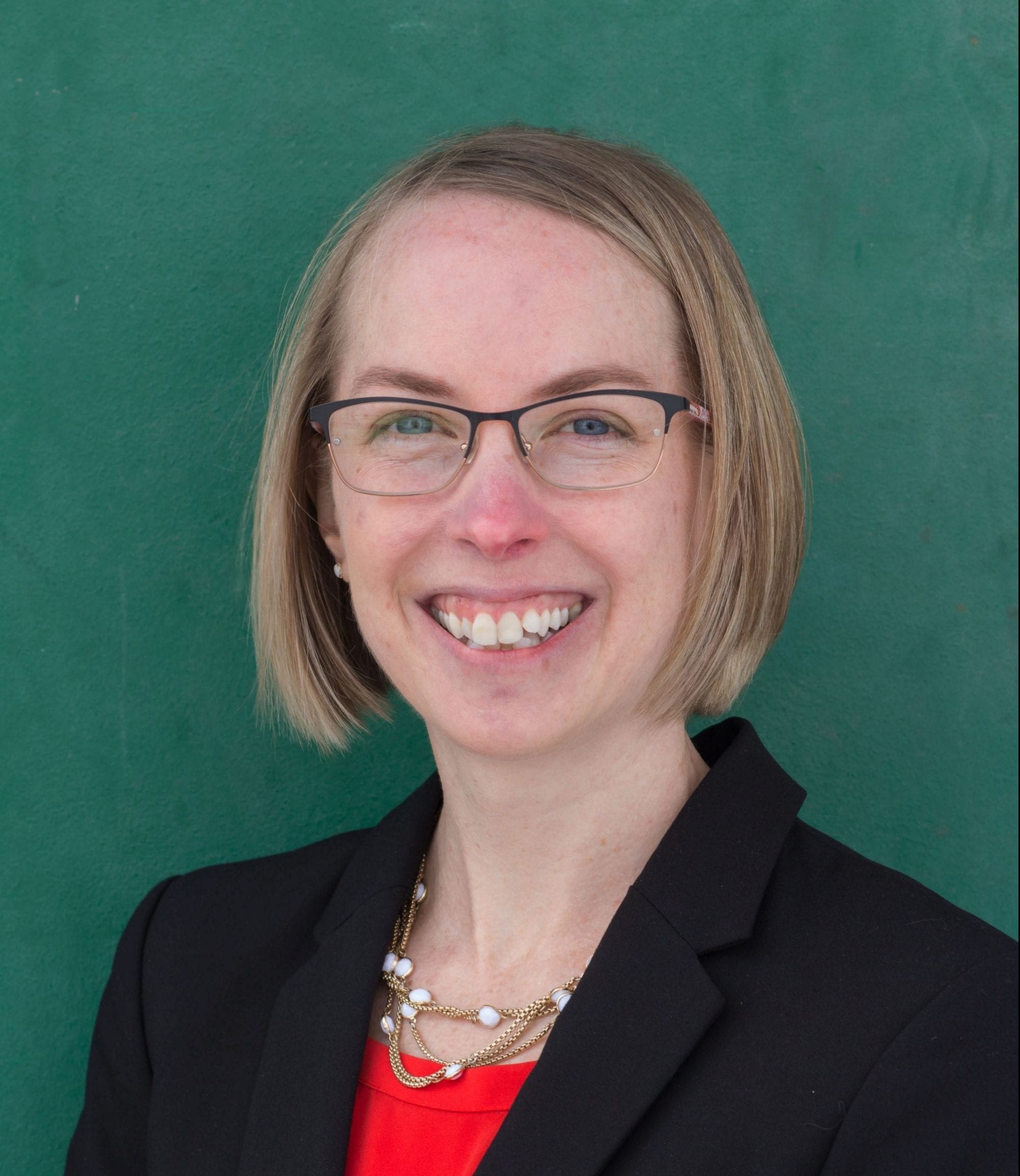(This is post 3 of 5 in the Broadening Participation and Broader Impacts Series)
The terms broadening participation and broader impacts has been used extensively in science, technology, engineering, and mathematics (STEM) disciplines, especially within STEM funding solicitations and proposals. Although used interchangeably at times, these two terms have their own unique history and definitions. By understanding these differences and similarities, researchers, educators, and administrators can implement and evaluate them more successfully. In this five-part series we’re calling “Broadening Participation and Broader Impacts” we’ll explore the history of these terms, their implementation, and frameworks to evaluate their success.
In our first post, we summarized the National Science Foundation’s (NSF) broadening participation initiatives. One initiative resulted in the creation of specific broadening participation grant programs. Another, as discussed in our second post, revised the merit-review process to include a broader impact criterion that included, among four other subcategories, broadening participation activities. Although the targeted broadening participation grants have seen success and interest, the same cannot be said among broader impacts activities.
Broadening Participation: The Most Underutilized Broader Impact Activity
Research into broader impact activities is often limited to public abstracts due to NSF’s confidentiality rules. The few studies that are able to access and analyze both public data (abstracts) and non-public data (proposals) have shown broadening participation is the least often addressed type of broader impacts activity.
For example, Watts et al. (2013), randomly sampled 280 abstracts and proposals in the Division of Environmental Biology, of which only 11% of abstracts and 12.3% of proposals included activities related to the “Broadening Participation of Underrepresented Groups” category. In an expanded analysis, Watts et al. (2015) examined the project reports of the awarded proposals finding Principal Investigators proposed more than twice the number of underrepresented broader impact activities than what was subsequently reported to NSF. The study’s authors interpret this lack of reporting to mean the activities were not done, or were not done well.
The disparity between proposed and reported underrepresented broader impact activities is likely the result of well-intentioned but inadequate planning. Likewise, many Principal Investigators may not be knowledgeable of the research around the recruitment and retention of underrepresented groups.
Ideally, broadening participation efforts should be woven throughout all broader impacts activities, and results from both relevant literature and the NSF’s own targeted broadening participation grant programs can help inform broader impacts activities. In the following sections we provide some broadening participation best practices and in our next post, provide ideas for incorporating them into broader impacts activities.
Broadening Participation Best Practices
Depending on the audience, the STEM discipline, and the broadening participation goals, the strategies used will vary. Below, we offer a summary of two broadening participation models, and the best practices of each.
1. The Pipeline Model: leading people towards STEM academic pursuits and careers
In the last decade many studies, and the NSF broadening participation programs on which they are based, have used the pipeline model to get more diverse populations on a journey towards STEM careers. These approaches try to increase the number and diversity of people who go into the “pipeline” at the entry point, usually middle school, and then plugging leaks throughout high school, postsecondary, and graduate school (National Academy of Sciences, National Academy of Engineering, and Institute of Medicine, 2007).
In general, these approaches focus on enhancing participants’ substantive knowledge and technical skills, providing financial support, providing extensive and intensive professional socialization, and providing bridge experiences.
Approaches That Have Worked
- Mentoring
Mentoring has been widely recognized as an important factor in the careers of many successful scientists and engineers and as a critical enabler in broadening participation (Rice and Alfred, 2014). Generally, mentoring is a career-oriented, caring relationship in which the mentor, a more experienced person, provides guidance, encouragement, inspiration, and a sounding board to a less experienced person. In this context, the mentoring component is embedded in specific research opportunities or professional development activities.
Multiple positive student gains from mentoring relationships have been demonstrated in the literature, including appreciation of what is required to be a scientist (White et al., 2013), opportunities to network with professionals (Lopatto, 2004; Seymour et al., 2004; Thiry et al., 2011), career preparation (Packard, 2004; Doerschuk et al., 2016), professional network growth (Pyrtle and Williamson-Whitney, 2018), and exploration of research opportunities (Griffin et al., 2010).
It is important to note that the style of the mentorship will dictate its success. When research mentors are accessible, friendly, and treat students as legitimate members of the research team, students will feel comfortable taking the intellectual risks that contribute to their development as scientists (Thiry et al., 2011).
Examples of successful mentoring programs include; Significant Opportunities in Atmospheric Research and Science (SOARS), MentorNet, Promoting Geoscience Research, Education, and Success (PROGRESS), and The Computing Research Association’s Committee on the Status of Women in Computing Research (CRA-W).

- Peer Support Networks & Residential Experiences
Peer support networks and community building efforts play an important role in fostering student engagement and retention in STEM majors and positive student outcomes (Wolfe and Riggs, 2017). Programs fostering peer-to-peer interaction and community building are often intentionally structured so that participants live together in residential communities and/or partake in shared curriculum with the goal of building a sense of community with meaningful peer relationships and support networks (Kendricks and Arment, 2011; Soldner et al., 2012).
For example, the Meyerhoff Scholars Program is an undergraduate program at the University of Maryland-Baltimore County. The goal of the program is to produce African-American students who continue their education beyond the University of Maryland to earn a doctorate in a STEM discipline and join a college or university faculty. This program uses intense peer study groups as well as the total residential experience to focus on the needs of the whole student. The confluence of these and other practices create a strong sense of community which, in turn, facilitates a high level of academic achievement and an environment conducive to intellectual exchange.

Other examples include; the Program for Excellence in Education and Research in the Sciences (PEERS) at the University of California-Los Angeles, the Scholars Program at Central State University, and the University of Central Florida’s EXCEL Program.
- Research Experiences
Providing undergraduate students with hands-on research experiences increases their awareness, knowledge, and confidence in STEM, which can lead to their pursuit of STEM graduate degrees and careers (Seymour et al., 2004; Lopatto, 2004). As such, NSF’s Research Experiences for Undergraduates (REU) program supports active research participation by undergraduate students in any areas of research funded by NSF.
Programs incorporating research experiences have proven successful in leading underrepresented participants into STEM graduate programs and careers by giving participants a clear understanding of what researchers do, how research impacts society, what their options are in pursuing research and higher education, and a toolbox of skills that better prepare them to succeed in related careers (Lopatto, 2004; Hurtado et al., 2010; Hallar et al., 2010; Jones et al., 2010).
- Bridge Programs
The pipeline model emphasizes the recruitment and retention of underrepresented students into STEM. Bridge programs focus on recruitment pipeline strategies to serve as the “bridge” between the secondary and postsecondary education pathways.
Bridge programs typically include intensive academic enrichment and support such as writing, mathematics, and reading, as well as expectations for college work (Kezar, 2000; Tsui, 2007). Collectively, these strategies increase awareness of STEM degrees and strengthen the academic preparation of students for the rigor of college (Wechsler et al., 2005; Hanks et al., 2007;Miller et al., 2007; Thiry and Hunter, 2008; Carrick et al., 2016).
Bridge programs have been developed for students entering any STEM field, or for students entering a specific STEM major or interested in a specific STEM major (Ashley et al., 2018). Summer bridge programs are the most common type of program and include multi week intensive experiences that occur in the weeks before a student’s first year of college or a transfer student’s entry into a 4-year institution (Ashley et al., 2018).
Positive student outcomes from bridge programs include increased interest in STEM (Thompson and Consi, 2007; Bruno et al., 2016; Pritchard et al., 2016) relationship building between student and faculty members (Maton et al., 2000; Wischusen et al., 2011; Lenaburg et al., 2012; Pritchard et al., 2016), development of research skills (Gilmer, 2007; Russomanno et al., 2010; Windsor et al., 2015; Graham et al., 2017), knowledge gained regarding STEM careers (Wechsler et al., 2005; Winkleby et al., 2009; Baber et al., 2010), knowledge gained about the college application process (Baber et al., 2010), and increased self-efficacy (Bruno et al., 2016; Maton et al., 2016).
Examples of successful bridge programs include; Bowling Green State University’s Academic Investment in Math and Science (AIMS) summer bridge program, Kapiolani Community College’s School of Ocean and Earth Science and Technology (SOEST) summer bridge program, Northern Colorado Bridges to Baccalaureate (B2B) program.

2. The Agency Model: leading people towards personal and community agency through STEM
The pipeline model is often criticized for being over simplified (Cannady et al., 2014; Vossoughi et al., 2016) and using standard academic and professional models of what STEM professionals and practices look like. The agency model thinks about broadening participation as a means for personal and community agency by recognizing the many ways that STEM is valuable to individuals and communities, not only in career choices, but also in everyday life (National Academies of Sciences, Engineering, and Medicine, 2016). In general, these approaches focus on valuing people and their cultural experiences and applying STEM research to current community/social issues.
Approaches That Have Worked
- Place-Based Learning
Underrepresented students often leave STEM degrees due to the perceived lack of social value or relevance to improving conditions for their communities (Bonous-Hamarth, 2010). The pedagogical approach of place-based learning places curriculum content in local environments and communities through the use of local features, phenomena, and issues as context and scaffolding for content (Gruenewald, 2003).
For example, environmental science programs on the Menominee reservations in Wisconsin and at the American Indian Center of Chicago were designed to privilege Native American and Western science equally (Medin and Bang, 2014). These programs acknowledged indigenous ways of conceptualizing natural forms, while Western science was used to explore the dynamics of these complex systems.
- Community-Based Participatory Research
Participatory research is both a philosophical approach and a methodological process for bringing unheard voices into the public sphere (Habermas, 2015). People most affected by the research are engaged in the process; from identifying the problem(s) to address, defining the research questions and the methods to collecting and analyzing the data. As a result, the findings and proposed solutions are more likely to be adopted, supported, and effective, compared to research approaches without stakeholder engagement (Kindon et al., 2007).
As mentioned above, the NSF REU programs have proven successful in retaining students from underrepresented groups, but REUs can also be developed to incorporate community members. The REU site on Sustainable Land and Water Resources (SLAWR) develops unique rigorous scientific research projects through intensive collaboration with Native American communities and REU participants – many of whom come from the Native American communities (Ward et al, 2018).
In another example, an exploratory second-year atmospheric science REU program had participants conduct participatory action research in two southern Louisiana communities where industrial activity and urbanization have caused dramatic geomorphologic changes that impeded residents’ ability to live off the land (Austin, 2006; Weinberg et al., 2018).
The REU participants assumed simultaneous roles as students, interdisciplinary researchers, and community liaisons as they facilitated the community‐engaged participatory research project. A study by Weinberg et al. (2018) found the experience altered REU participants’ views of the respective roles of academic researchers and community members in generating knowledge, while the project fostered positive change in both academic and community contexts.
Broadening Participation and Broader Impacts
Unlike large-scale broadening participation programs, the broader impacts activities outlined by NSF are smaller in scope and are more financially and temporally constrained. However, Principal Investigators can incorporate many of the best practices outlined above into their broader impact activities on a smaller-scale and/or coordinate with established programs to achieve a bigger impact. In our next post, we will provide some ideas on where and how these best practices can be used by Principal Investigators in their broader impacts activities.

Dr. Cheryl L. Bowker
Associate Director – STEM Center
Cheryl has worked at the STEM Center since 2013 and has evaluated and managed several STEM education projects. Cheryl enjoys impassioned discussions about research, education, and insects. Check out the Staff page for contact details.
Disclaimer: The thoughts, views, and opinions expressed in this post are those of the author and do not necessarily reflect the official policy or position of Colorado State University or the CSU STEM Center. The information contained in this post is provided as a public service with the understanding that Colorado State University makes no warranties, either expressed or implied, concerning the accuracy, completeness, reliability, or suitability of the information. Nor does Colorado State University warrant that the use of this information is free of any claims of copyright infringement. No endorsement of information, products, or resources mentioned in this post is intended, nor is criticism implied of products not mentioned. Outside links are provided for educational purposes, consistent with the CSU STEM Center mission. No warranty is made on the accuracy, objectivity or research base of the information in the links provided.
Get Notified of New Posts
Subscribe and receive email notifications about new posts directly in your inbox.



